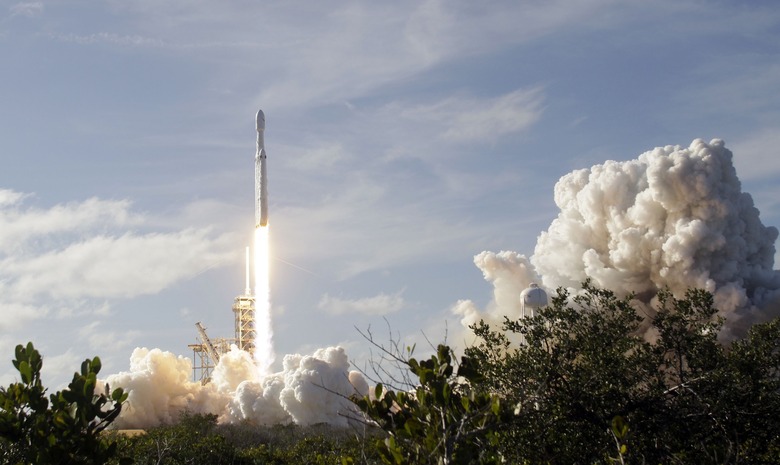SpaceX Just Set A New Record By Launching The Same Rocket Five Times
- SpaceX set a record this morning with the launch of a Falcon 9 booster that had already flown four times before.
- The booster failed to land on the platform for a fifth time, but the launch still set a record for the company.
- The rocket's fairing halves were also recovered.
- Visit BGR's homepage for more stories.
SpaceX's busy schedule of rocket launches continued this morning with the launch of a Falcon 9 rocket delivering yet another bundle of the company's Starlink satellites into orbit. The launch, which was originally scheduled for Sunday, but was called off after an automatic abort was triggered.
The launch is just a tiny part of the larger Starlink mission, which will eventually see thousands and thousands of tiny satellites sent into orbit. However, this morning's launch was special for an entirely different reason. It was the first time a Falcon 9 rocket has been reused five times, and the record-setting mission shows just how powerful SpaceX's reusable rocket business model can be.
While much the world is hunkering down to combat the spread of the new coronavirus, it was business as usual for SpaceX on the launch pad this morning. The company's planned launch went well, with the rocket heading skyward with its payload of 60 shiny new Starlink satellites.
Starlink is SpaceX's larger-than-life satellite program that hopes to bring high-speed data to every corner of the globe. That means the eventual launch of thousands of tiny satellites to form a grid that wraps around the globe.
The plan has been criticized by astronomers who say that sending so many objects into Earth orbit will hinder observations of space from here on Earth. Some have even provided hard evidence of how dramatically the satellites can ruin the view of the cosmos for scientists trying to study distant objects. SpaceX has said that it is willing to work to mitigate these effects, including possibly painting the satellites with a coating that would make them much harder to see.
In any case, the mission went off without a hitch... well, almost. The launch itself and deployment of the satellites went as planned, but the record-setting first stage of the Falcon 9 booster failed to make a controlled landing on SpaceX's drone ship. It was noted by SpaceX boss Elon Musk that one of the booster's engines died late in the launch, and that may have contributed to the booster being unrecoverable.
Yeah. There was also an early engine shutdown on ascent, but it didn't affect orbit insertion. Shows value of having 9 engines! Thorough investigation needed before next mission.
— Elon Musk (@elonmusk) March 18, 2020
SpaceX has made a habit of attempting to recover the nosecone halves of its rocket, called fairings, as well. The company did that yet again today, though both halves of the nosecone splashed down in the ocean before being plucked. SpaceX has reused these components regularly, helping to further cut the cost of its rocket launches.
